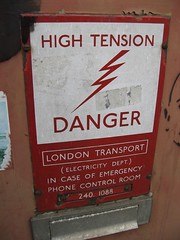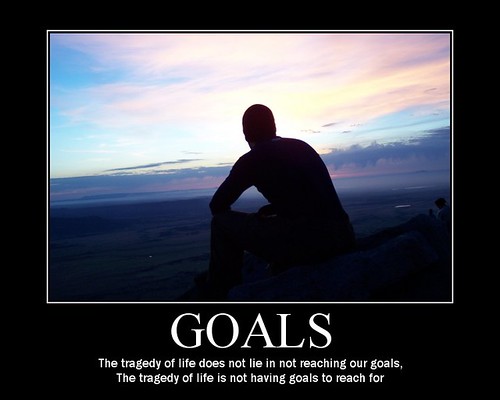You know your writerly friends (some of them are you guys) who say of their characters, “I can’t write; Jimmy’s rebelling. He won’t go to Angela’s”? This isn’t something I’ve struggled with a whole lot, but that might be because I have no problem manipulating my characters to get what I want.
 I think author/former literary agent Nathan Bransford says it well:
I think author/former literary agent Nathan Bransford says it well:
And this [characters coming alive and taking the story in another direction] can really help out a story – while obviously the characters are only alive insasmuch as they’re in the author’s (living) head, this may be a way of expressing that the author is being true to the logic of a situation. The author has a sense of the character, and it’s important that the character’s actions are logically consistent.At the same time, I always find it curious to hear authors so completely in thrall to their worlds and characters, and I start wondering, “Wait a second, who’s in charge here?”
Hint: the author.
Manipulating your characters with motivation
I try not to over outline, but I usually know (or figure out during the course of a scene or sequence) what my characters need to do next, either for themselves or for the external plot. This isn’t to say it’s always easy to “make” them do that, or to make the jump—I do sometimes stop and say, “Now, why would s/he do that? What would motivate him to do that?” (Or “how can I make him do that, or want to do that?”)
I’m not the only one who believes in character manipulation through motivation. In Scene & Structure, Jack Bickham gives a great example of how character motivation can move a character into place on a scene level:
In one of my recent novels published under a pseudonym which I don’t want to reveal, my heroine at one crucial turning point must decide to visit the room of a sick person in the retirement center where the heroine works. She has just learned at the end of a scene that the resident is more ill than she had imagined; but there are both a doctor and a nurse on duty, and there seemed to me at first to be no emotional or logical reason for my very-busy heroine to drop everything and fall even further behind in her pressing work to pay a visit when such good care is already available. But that was exactly what my plot plans required that she somehow logically do. (56)
 Breaking in here to add: note the emphasis on doing this logically. We can’t drag our characters around like marionettes! We have to find something within our characters to motivate them to act how we want—or we need to add something external to prompt them back into our plot. Now, back to Jack:
Breaking in here to add: note the emphasis on doing this logically. We can’t drag our characters around like marionettes! We have to find something within our characters to motivate them to act how we want—or we need to add something external to prompt them back into our plot. Now, back to Jack:
It took considerable doing on my part to have my heroine feel terribly shocked to learn how serious the illness might be . . . then review her fine relationship with the sick person . .. then realize that good care was being provided . . . but then decide that she would never be able to work efficiently this day as long as she remained so worried and preoccupied, and that she owed it to herself — to make herself feel more at ease about the illness — to make a brief visit to the sick person’s room and reassure herself that the sick friend did not appear at death’s door. Only in this way, she decided, would she have enough peace of mind to return to her overloaded work schedule and try to get caught up.
In this way I was able to build logic into a key turning point of the story and make my heroine’s immediate cessation of regular work, and visit to the sick room, believable. But none of this would have been possible if I hadn’t put myself into my character’s feelings and thoughts. (56)
To be clear: I have had characters “tell” me things—back stories, histories, twists that can affect and enrich the plot. I’ve had their inner conflicts develop into major interpersonal conflicts over the course of the story. I do sometimes let the plot take a different route that better suits my characters, but the final destination doesn’t change.
But more importantly, as I put more emphasis on figuring out what motivates my characters, what makes them tick, I not only know how to manipulate them better to still accomplish the purposes of the plot (if not the exact scenes I was planning), but I know the characters themselves better, making them more well-rounded and realistic.
My secret sauce example: motivation and characterization
For me, my character motivation revelation came at a high level. Originally, I wrote a novel where the heroine was . . . well, kinda wishy-washy. Halfway through the book, I decided/discovered (I forget; it’s been four and a half years!) that she was an ex-cop. Wishy-washy + ex-LEO, no matter how long she’s been off the force, do not = a character that makes sense.
Finally, I let go of the wishy-washier side of her nature. I changed her motivations throughout the book. Instead of being frightened by the villains, she was trying to protect other people from them. Instead of backing down, she stood up and she fought. Instead of keeping quiet, she kept dangerous secrets for the sake of others.
This changed a whole lot about her, but the plot actions of the story were largely (though not totally) the same. She became a character not to be pitied, but someone you’d want on your side in a fight—and her motivations and her character as a whole finally made sense.
And, yep, this is a change I made in the book that went from rejection to offer!
What do you think? How do you manipulate your characters’ motivations?
Photo credit: Robert V; marionettes—Eugene Wei












 Amid writing three books in a year (I’ve only done that once, okay? I reserve the right to repeat it
Amid writing three books in a year (I’ve only done that once, okay? I reserve the right to repeat it  ), I also revised and edited the first in the series. (I was not so deluded that I would spend a lot of time editing the second and third books, however. Once I got through all those notes you write to yourself while writing the first draft, I saved and closed them. And shared them with Sarah. The end.)
), I also revised and edited the first in the series. (I was not so deluded that I would spend a lot of time editing the second and third books, however. Once I got through all those notes you write to yourself while writing the first draft, I saved and closed them. And shared them with Sarah. The end.) At that writing conference, I joined a “writers’ support group” of sorts, an email list for attendees of the conference, and met 200 new writing friends. I critiqued some of these gracious friends’ writing, and they were kind enough to critique mine. We laughed and cried together, and I’m still happy to be a member of Authors Incognito.
At that writing conference, I joined a “writers’ support group” of sorts, an email list for attendees of the conference, and met 200 new writing friends. I critiqued some of these gracious friends’ writing, and they were kind enough to critique mine. We laughed and cried together, and I’m still happy to be a member of Authors Incognito.






